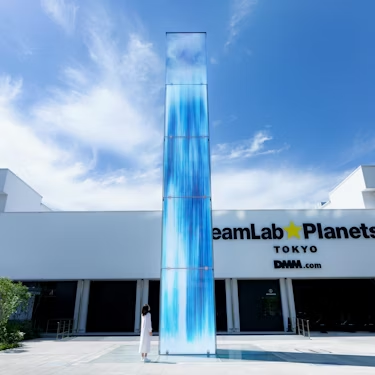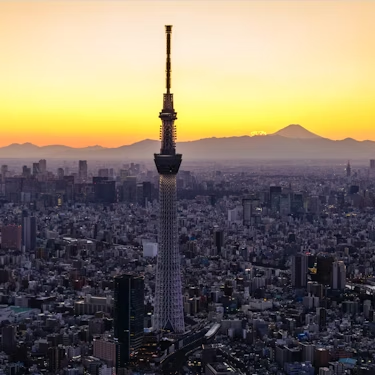More about: Tokyo in 7 Days: a guidebook for getting the most out of your visit
With a population of nearly 14 million and a metropolitan area of more than 13,000 square kilometres, Tokyo requires a good deal of advance planning to get to know it thoroughly.
If your trip to Japan lasts a total of 7 days, I recommend that you focus on the metropolis and its surroundings. There are enough attractions to see in Tokyo and you just need to be clear about what to see and how to get around.
Day 1: Shinjuku, get to know the city centre
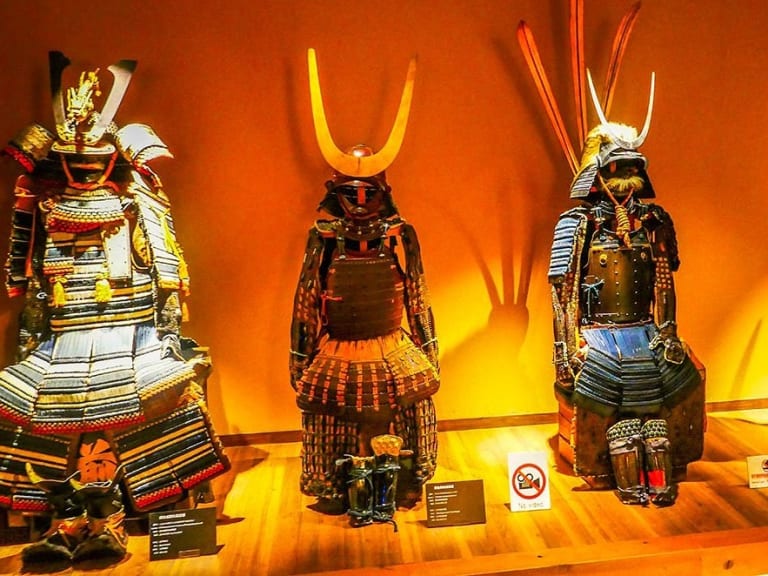
Shinjuku is a business district that develops around Tokyo's busiest train station. In my opinion, it is an ideal first stop to understand Japan and immerse yourself in the busiest part of the city.
The first day is usually a bit complicated: the trip is very long and you need to make a stop at the hotel to drop off your luggage. That's why I've come up with a simple itinerary that doesn't require too much effort.
Visit the Samurai Museum
The first stop is a cultural institution that will take you back to Japan's glorious past. The museum houses the finest armour and katana from the Muromachi, Edo and Kamakura periods. In fact, the Japanese warriors par excellence had three types of swords: Ootachi (long), Katana (medium) and Tachi (short).
You will learn more anecdotes at the museum, which is located within walking distance of the station. If you want to learn more, there are free group tours every 10 to 20 minutes. For more information, visit the official website.
If you are interested in this topic, I also recommend you to read the post about ninja/samurai experiences in Tokyo.
Stroll around Shinjuku Gyoen
After your visit, you can get some fresh air in Shinjuku Gyoen, one of Tokyo's largest and most popular parks.
It was built during the Edo period (between the 17th and 19th century) as a residence for feudal lords and in 1903 it was taken over by the imperial family who used it to house their guests.
Don't arrive too late. Many attractions in the capital - and in Japan in general - close quite early. Shinjuku Gyoen is no exception as its doors are only open between 9:00 and 16:30.
Tokyo Skytree
You can also buy tickets to the Skytree, one of Japan's tallest communication towers, which is 634 metres high and houses, among other things, a restaurant, two observation decks and the most stunning views of the Japanese skyline. You can choose between two heights, Tembo Deck (350m) and Tembo Galleria (450m), and booking your tickets in advance will save you time and queues.
End the day with a nice bowl of ramen
Before you go to bed - and I'm sure you'll be tired - you can have a cup of ramen. Whether in summer or winter, it's a good way to end the day.
In Shinjuku, the restaurant of choice is Ichiran. It is a chain but the quality is very good. Keep it in mind if you find it in other parts of the city.
If you prefer somewhere else, you won't have any problems. Shinjuku is part of many food tours in Tokyo and walking through the famous Drunkard's Alley is a unique experience.
Day 2: Asakusa and Ueno, a day in its most important temples and museums

The second day usually starts quite early: jet lag is unforgiving. Make the most of your early wake-up call to see a very popular attraction...
Marvel at Sensō-ji
This is the oldest Buddhist temple in Tokyo and a must-see on any trip to the Land of the Rising Sun, so it's best to take a tour of the area. Its construction dates back to the 7th century and is linked to a legend.
According to local folklore, two fishermen brothers found a statue of the goddess Kannon. Despite their attempts to return it to the river, the statue seemed to follow them everywhere.
Only then did they understand the divine message and so they decided to erect the temple. Sensoji issurrounded by impressive gates, a five-storey pagoda and stalls selling souvenirs and traditional items.
Don't miss the Tokyo National Museum's collection
The oldest of Japan's museums, it houses a vast collection of art objects and archaeological finds. It is only 25 minutes away from the temple, so I recommend you take a leisurely stroll between the two points.
Among the most important works, we can mention the following:
- Honkan, the Japanese gallery. Its highlights are the Zen paintings and samurai clothing.
- Toyokan, the gallery dedicated to Asian civilisations. It brings together pieces from China, India, Cambodia, Korea and Egypt.
- Horyuji, the treasure gallery. It houses gifts from the Japanese imperial family and gigaku, colourful demonic masks from local folklore.
Be careful: it is open every day except Monday. I recommend booking tickets for the Tokyo National Museum in advance.
Take a break in Ueno Park
Right next to the museum is Ueno Park, a must-see if you are travelling to Tokyo in spring. It's one of the best places to see the cherry blossoms, a phenomenon called Sakura in Japan, symbolising human life, the transience of time and nobility.
After sunset, the park is even more magical, with countless lanterns and lights from food stalls illuminating the trees.
This green area is home to a number of attractions: the Shinobazu pond with its rental boats, the statue of the last samurai (Saigō Takamori), the zoo, viewing platforms and more.
Wrap up the day at Yamabe Okachimachi
After such a busy day, I'm sure you'll want to reward yourself with a nice dinner. Within walking distance of Ueno Park is a good, nice and cheap restaurant: Yamabe Okachimachi.
The house speciality is Tonkatsu, a breaded and deep-fried pork cutlet (6 Chome-2-6 Ueno, Taito City). A good way to get to know all this in detail is by bike, and for that, you can book a very complete tour.
Day 3: Harajuku, Omotesando and Shibuya, a day out of the city centre

The Harajuku district is located between Shinjuku and Shibuya and is easily accessible by underground. The Chiyoda and Fukutoshin lines pass through here.
Get lost in Meiji Jingu Shrine
This splendid Tokyo landmark is dedicated to Emperor Meiji, the first emperor of modern Japan, and Empress Shoken. It was completed in 1920, but did not survive the bombings of World War II. Like other buildings in the Rising Sun, it was completely rebuilt after the end of the conflict.
As you enter, the sounds of the metropolis linger at the door. It is surrounded by a forest that covers an area of 70 hectares and is home to more than 200 different varieties of trees. It is open every day of the year from dawn to dusk and admission is free.
Take your little ones to KiddyLand
In case you are travelling to Tokyo with children, I recommend you to make a stop at this shop, just 5 minutes away from the previous point of your tour. Actually, more than a shop, it's a real institution in the city.
On its four floors you can find all the main characters from the Rising Sun (Hello Kitty, Rilakkuma, Studio Ghibli, etc.), as well as international franchises (Marvel, Disney, etc.). To get an idea, you can take a look at the official website.
Get lost in Shibuya
Shibuya is known as much for its shopping as for its lively nightlife. Actually, there are two emblematic things in the neighbourhood: the busiest pedestrian crossing in the world (right in front of the station) and the statue of Hachiko the dog.
If you don't know his story, you can read the synopsis of the movie about his story.
Day 4: Toyosu, Odaiba and Ginza, a day of shopping

Day four opens with a classic of the Japanese capital: the Toyosu fish market.
If the name doesn't ring a bell, it's because it was originally located in Tsukiji. However, it was closed in 2016 and the new one is here.
Start your day at the fish market
The structure was built in less than two years and stands on an artificial island in Tokyo Bay. The new market is less chaotic and you can't see the famous tuna auction up close. However, it is worth seeing how the fish that will later end up in the city's best sushi restaurants is bought.
Access is free but you must pick up a special pass at the main entrance. It can be a bit tricky - few people speak English in Japan and Spanish is even less known - so I advise you to find out a little in advance.
Take a closer look at the Gundam Statue
Leaving the market and walking for a few minutes you will reach the second attraction. The Gundam statue in the Odaiba district is a 1:1 scale model of the robot from the animated series.
If you look closely you will notice the resemblance to the original model and if you stay for a few minutes you will be able to see the light effects, the movements of the head and the steam coming out of its thorax.
Explore Ginza
After a stroll through Odaiba, you can take the metro (Yurikamome line to Shimbashi + Asakusa line to Higashi-ginza) and in a few minutes you will have arrived in the most exclusive district of the city.
This area concentrates the best national and international brands. You can take advantage of your stay to visit these shops:
- Wako (multi-brand)
- Uniqlo (clothing)
- Onitsuka Tiger (sneakers)
- Mitsukoshi (multi-brand)
- Hakuhinkan (games)
- Senjafuda (phone straps)
- Six (multi-brand)
Day 5: Kawaguchi, an excursion away from the hustle and bustle of the city
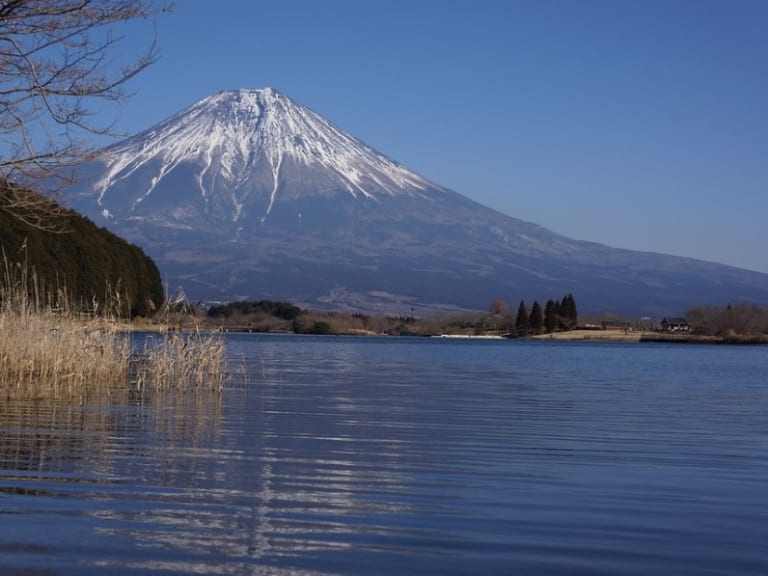
Tokyo is wonderful and surprises you every day. However, it is also a huge metropolis, with huge buildings, a jungle of billboards and countless people on the streets.
For a break from the hustle and bustle, I suggest a trip to Kawaguchi, one of the five lakes on Mount Fuji.
Admire the silhouette of Mount Fuji
Taking a bullet train excursion or booking a tour to Mount Fuji from Tokyo are two of the best ways to escape the hustle and bustle of the city for a few hours.
Mount Fuji, in particular, is one of the symbols of the country and a place with a strong spiritual bond with the Japanese. It is also Japan's highest peak and the destination of many hiking trips.
If you travel to Tokyo in winter, you won't be able to climb it - access is closed - but there's nothing to stop you from admiring it.
From Kawaguchiko Station, you can take a bus to Kawaguchiko 5th Station. From here you have a wonderful view over the lakes and the mountain.
Try Hoto noodles
In this part of the Rising Sun, the star dish is Hoto Noodles, handmade noodles cooked in miso soup with pumpkin and other ingredients. It is believed that Takeda Shingen, the local warlord, used to eat this recipe before going into battle.
In Kawaguchi you will find it in many places but there is one restaurant that prepares the best: Houtou Fudou. It is typically Japanese and if you sit inside you can enjoy lunch sitting on a tatami mat (3631-2 Funatsu, Fujikawaguchiko, Minamitsuru District, Yamanashi).
Cruise the lake
While you're on the shores, why not treat yourself to a mini-cruise. You'll go to Mount Fuji in a luxury bus, sail on a boat on Lake Ashi, and take a cable car up to see Hakone and return to Tokyo by bullet train. How about that?
In both cases, the trip takes about half an hour and costs around €100.
Day 6: Nikko, a taste of rural Japan

With its forested hills and splendid temples, Nikko is an ideal destination for exploring rural Japan. If you book a tour to Nikko you will discover some of Japan's most beautiful temples and shrines with a comfortable bus for transport and a professional guide.
Enter Toshogu Shrine
Nikko is located at the entrance of the national park of the same name and is best known for the Toshogu Shrine. The complex is richly decorated and is located in the middle of a forest.
It contains both Shinto and Buddhist elements and one of its landmarks is the five-storey pagoda that stands two steps from the entrance. The combined entrance + museum ticket costs approximately 2100 yen (€15).
Immerse yourself in nature
Kanmangafuchi Gorge is a gorge a few hundred metres wide. It was formed after the eruption of a volcano and its peculiarity lies in the 70 stone statues (Bodhisattva) facing the river.
I recommend you get here for a nice walk. Kanmangafuchi Abyss can be reached in about 30 minutes on foot from the shrine.
Look for the primates at Tōshō-gu Shrine
You know the famous "I can't see, I can't hear, I can't speak" monkeys. They are not just emoticons but a true symbol of Buddhist culture. They are called Mizaru, Kikazaru and Iwazaru and they refer to evil. Let me explain better: "see no evil", "hear no evil" and "speak no evil".
They most probably come from the writings of Confucius and arrived in Japan from China around the 8th century.
In the Edo period (between the 17th and 19th centuries), the refiguration of these primates increased considerably. Indeed, the Tōshō-gu temple was built at this time and houses some perfectly preserved sculptures.
Day 7: Naka Meguro

Before returning to everyday life, I recommend exploring a quiet neighbourhood, somewhat off the beaten track. Getting there is easy, Nakameguro station is on the Tokyu-Toyoko and Hibiya underground lines.
Breakfast in style
The district revolves around a small river and is home to a number of bars where you can start your day with energy.
Personally, I recommend trying I'm Donut? All their doughnuts are made with an original blend of Japanese flour and trans-fat free butter. You can choose from different glazes (pistachio, raspberry, lemon) at an individual price of about 200 yen (about €1.5).
Travel back in time at the Asakura Old House
As you can imagine, this is a century-old two-storey wooden house. It was built by Torajiro, a man who came to Tokyo to seek his fortune and quickly became a successful timber merchant.
The house has survived several earthquakes and also the bombings of World War II. You can visit it for about 100 yen.
Say goodbye to Japan at Yebisu Beer Museum
In the Land of the Rising Sun, beer first appeared in the late 19th century. The Dutch were the first to produce it in Nagasaki for their personal use while the first brewery was founded in 1869 in Yokohama. Yebisu made its debut a few years later (in 1889) and distinguished itself from the beginning for its quality.
When the company was in its infancy, the factory was located in the countryside, whereas today it is in a heavily urbanised area. It's an easy 20-minute walk from the old house in Asakusa.
The Yebisu Beer Museum traces the history of the brand and shows how the precious amber-coloured liquid is produced. You'll also see old advertising posters and TV commercials.
Of course, the tasting room where you can sample a few pints is a must. The museum is open all week except Monday and admission is free. You only have to open your wallet to taste the beers or in case you want to buy a souvenir in the shop. For more information I recommend you to have a look at the official website.
Is it worth staying in Tokyo for a week?
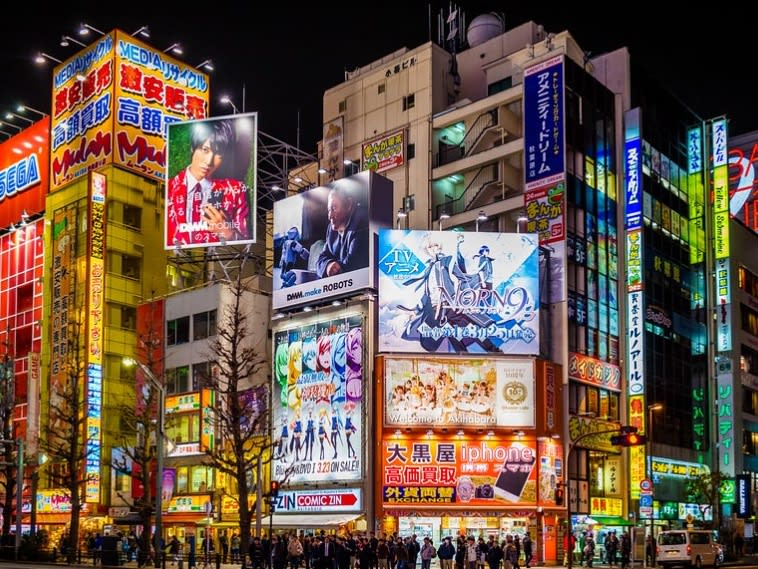
In my opinion, yes. To explore Japan, 7 days is not enough. If you only have a week's holiday, staying in the capital and taking advantage of its good connections is a splendid idea.
You can easily visit Yokohama, Todoroki Valley, Enoshima Island, the coastal town of Kamakura or book a trip to Mount Fuji and Lake Ashi from Tokyo.
Budget for travel to Tokyo
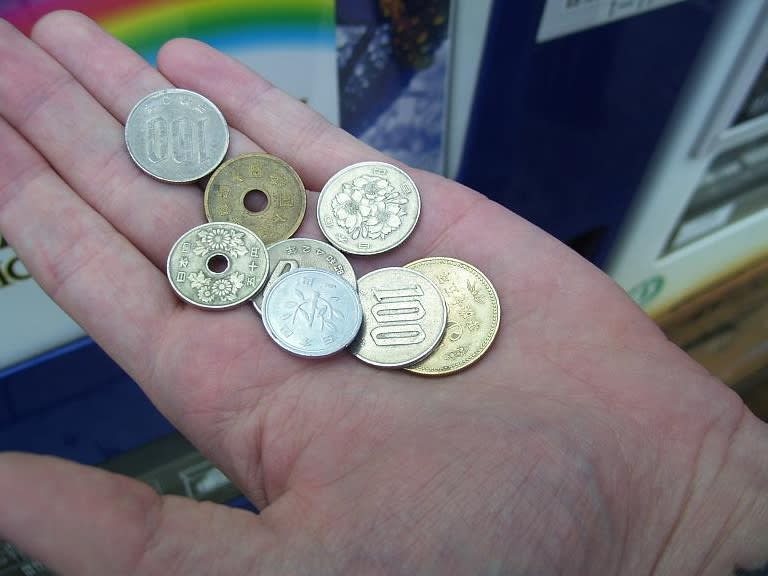
The Japanese capital is quite expensive but not as expensive as you might think. True, there are some things that cost more in Japan than in Spain - for example, fruit, some imported products or bullet train (Shinkansen) tours - but, in general, you can find all price ranges.
When it comes to eating, you have very affordable options: a bentō (mixed boxed meal) costs around 400/600 yen (between 3 € and 5 €), a bowl of gyudon with miso soup costs around 400 yen, while a bowl of ramen costs between 500 and 800 yen.
You'll also find various local snacks at affordable prices at 7/11 (and at all hours of the day).
As for accommodation, a night in a good hostel is around €20 per night. If you want to experience a local tradition, karaoke, renting a room for two hours with a drink included costs around 3000 yen (about €25).
In general, for a beer and a drink you will have to pay ¥600 and ¥800 respectively.


